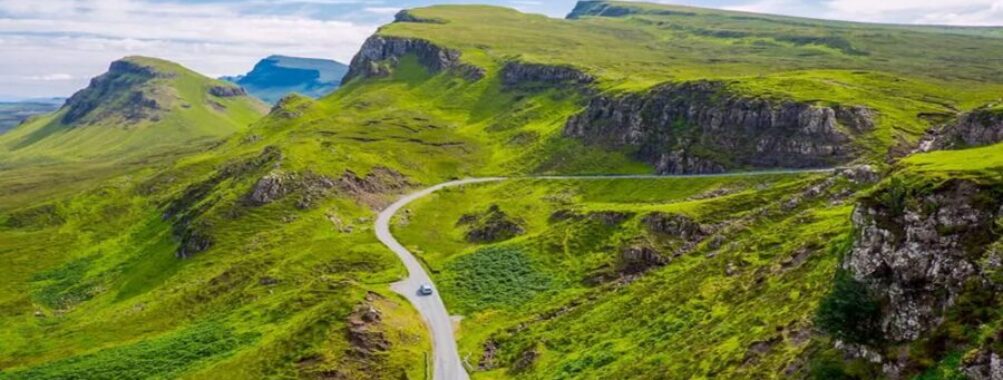
Budget Friendly Isle of Skye Itinerary: 7 Must-See Spots & Insider Tips for an Affordable Adventure
Traveling to the Isle of Skye on a tight budget might sound tricky, but honestly, it’s way more doable than most folks realize. With a little planning, you can soak up dramatic landscapes, charming villages, and hidden gems on Skye without draining your wallet.
I’ve wandered misty trails and sipped coffee in tiny coastal cafes here—believe me, you don’t need deep pockets to have an unforgettable Skye adventure.
You’re probably wondering which routes, stops, and stays give you the best bang for your buck. And let’s face it, who doesn’t love stumbling on free things to do that still feel magical? (Fairy Pools at sunrise, anyone?)
This guide will break down how you can experience Skye’s wild beauty while spending less.
Table of Contents
- Key Takeaways
- Essential Planning for a Budget Isle of Skye Trip
- Choosing the Right Season to Visit
- Setting a Realistic Budget
- Packing Smart for Scottish Weather
- How to Get to the Isle of Skye on a Budget
- Public Transport Options from Glasgow and Edinburgh
- Affordable Car Rental and Carpooling Tips
- Hitchhiking and Cycling Routes
- Budget Accommodation on the Isle of Skye
- Best Hostels and Guesthouses
- Affordable Airbnb and Budget Hotels
- Camping, Wild Camping, and Campsites
- Staying in Communal Kitchens and Shared Spaces
- Three-Day Budget-Friendly Isle of Skye Itinerary
- Day 1: Portree and the Trotternish Peninsula
- Day 2: Quiraing, Fairy Glen, and Old Man of Storr
- Day 3: Neist Point, Dunvegan Castle, and Coral Beach
- Free and Low-Cost Things to Do
- Unmissable Hikes and Walking Paths
- Discovering Local Community Events
- Authentic Experiences Without the Price Tag
- Exploring Isle of Skye’s Natural Wonders on a Budget
- Fairy Pools and Loch Coruisk
- Dramatic Cliffs at Kilt Rock and Brother’s Point
- Secret Spots: Elgol and Sleat Peninsula
- Cultural and Historic Budget Attractions
- Dunvegan Castle, Duntulm Castle, and Dunscaith Castle
- Talisker Distillery on a Shoestring
- Plockton and Eilean Donan Castle Side Trips
- Eating Well on a Budget
- Where to Find the Best Budget-Friendly Seafood
- Local Delicacies at Food Trucks and Markets
- Tips for Self-Catering and Affordable Meals
- Money-Saving Travel Tips for Skye
- Navigating Skye Without Breaking the Bank
- Insider Advice for Affordable Sightseeing
- Driving on the Left Side and Getting Around
- Frequently Asked Questions
- What are the top must-see attractions on the Isle of Skye for a short 2-day trip?
- How can you maximize your visit with a 3-day budget-friendly itinerary on the Isle of Skye?
- Can you suggest an affordable 4-day itinerary that covers the Isle of Skye’s highlights?
- What tips do you have for budget accommodation while exploring the Isle of Skye?
- How to plan a cost-effective 7-day journey through the Isle of Skye’s landscapes?
- What are the best ways to experience the Isle of Skye’s natural beauty on a limited budget?
- Book Your Dream Experience
- More Travel Guides
Key Takeaways
- Save money by choosing smart travel options and affordable places to stay
- Discover lesser-known, free or cheap attractions on the Isle of Skye
- Learn practical tips for eating and exploring without overspending
Essential Planning for a Budget Isle of Skye Trip
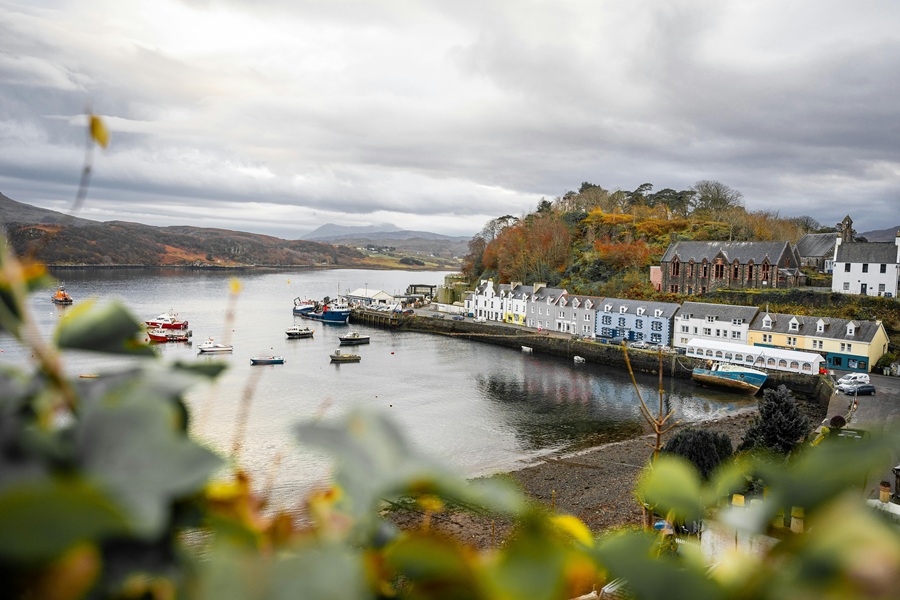
If you want to keep your Isle of Skye adventure affordable, focus on timing, smart spending, and being ready for the always-changing Scottish weather.
With the right prep, you can save money and get the most out of your trip.
Choosing the Right Season to Visit
Let’s be honest: summer brings out the crowds and the highest prices. If you’re hoping for quieter roads and cheaper accommodation, try spring (April–May) or fall (September–October).
During these months, you’ll find hostels and campgrounds more available, and local spots feel much less crowded. Avoid school holidays if you can—prices for even the most basic B&Bs and buses jump up fast.
Don’t rule out winter if you’re into brisk walks and beautiful empty landscapes. Just be ready for shorter days; daylight fades pretty quick up north.
I once visited in late September and even then, it felt peaceful, with golden hills all to myself.
Setting a Realistic Budget
Start by putting your money toward accommodation and transport—those are the real wallet-eaters. Hostels and campgrounds usually offer the best deals.
Some hostels go for around £20 per night, but book early during busy months. Public buses can work, but renting a car with a small group often ends up cheaper if you split the cost.
Here’s a quick example budget for one day on Skye:
| Expense | Low Estimate | Notes |
|---|---|---|
| Accommodation | £20 | Hostel bed |
| Transport | £8–£25 | Bus or shared car |
| Meals | £10–£15 | Groceries & snacks |
| Activities | £0–£5 | Hikes, nature walks |
| Misc. | £5 | Small treats |
For meals, shop at supermarkets and make your own food—eating out adds up fast! Keep some cash handy for small local shops, as not everyone takes cards.
If you need a spot to stash your bags in town, luggage storage shops are pretty handy and usually cheap.
Packing Smart for Scottish Weather
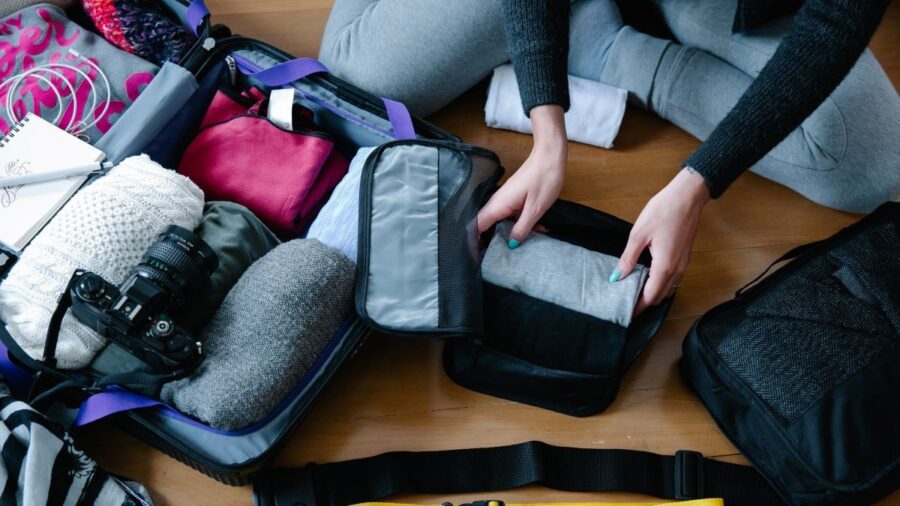
Skye’s weather loves surprises. You’ll need to be ready for sun, wind, and rain—sometimes all in the same hour.
Good waterproofs are essential: jacket, boots, and even a small rain cover for your backpack. Think layers: T-shirt, sweater, light fleece—so you can peel things off or bundle up fast.
I always pack quick-dry pants, warm hats, and those tiny foldable umbrellas (though honestly, one gust and—poof—they’re gone, so get a sturdy one).
Don’t forget a little first aid kit. If you’re hiking, a reusable water bottle and basic hiking snacks are musts.
If you want to browse useful travel gear without overpaying, check out travel gear deals. Good kit means less time worrying about getting soaked.
Bring a tote or trash bag to pack out all your rubbish, too—leave no trace matters a lot on Skye’s fragile trails.
How to Get to the Isle of Skye on a Budget
You really don’t have to spend a fortune to reach the Isle of Skye if you plan ahead and stay flexible.
There are budget options whether you prefer buses, driving, or even biking and thumbing a ride.
Public Transport Options from Glasgow and Edinburgh

If you want to avoid splurging, go by public transport. Citylink buses run daily from both Glasgow and Edinburgh all the way to Portree, Skye’s main village.
Check schedules online and try to snag advance deals—booking early saves you money. The train only goes as far as Mallaig or Kyle of Lochalsh, so you’ll need to hop on a local bus or use the Skye Bridge (which, thankfully, is free).
Public transport takes longer than driving, but it’s stress-free, and you get to soak in the landscape without worrying about roads or petrol costs.
If you’re a student or under 26, look into travel passes that can slice down fares. Scottish Citylink and Stagecoach often have discounts, especially off-season.
Carry snacks, since rural Scotland doesn’t exactly overflow with cheap café stops along the way.
Affordable Car Rental and Carpooling Tips
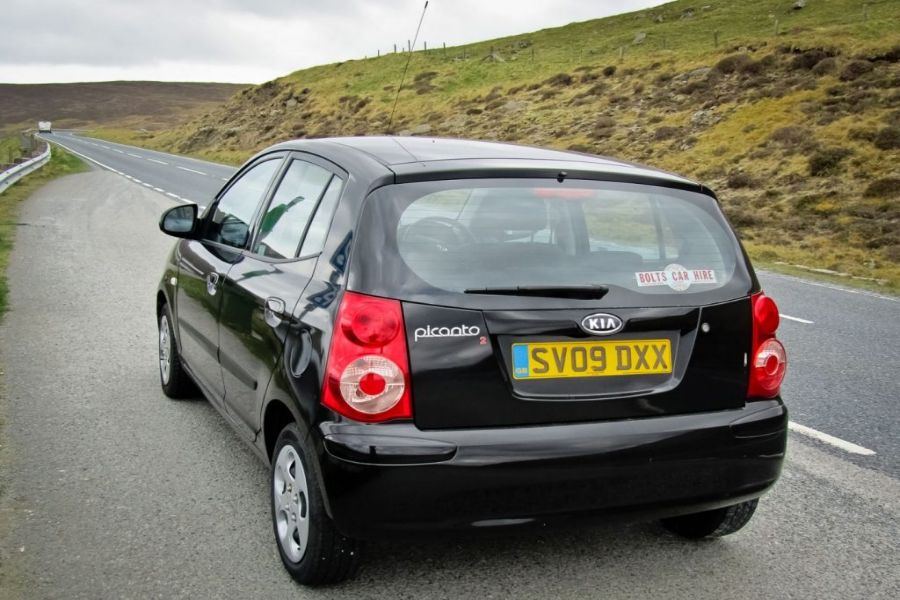
Renting a car can be affordable if you share the cost. Traveling with friends or meeting others through rideshare groups spreads expenses and lets you split fuel costs.
Search for deals by comparing prices for car rentals well ahead of your trip—rates can double during summer. Manual transmission cars are usually cheaper.
Pick up your car outside the airport to dodge extra fees. If you’re okay with quirky village detours or tiny roads that Google Maps forgets, renting really opens up hidden gems all over Skye.
Carpooling, either via apps or even hostel message boards, sometimes works out better than wrestling with bus schedules. Be upfront about your plans, and don’t be shy—fellow travelers are often keen to split costs and swap stories.
Hitchhiking and Cycling Routes
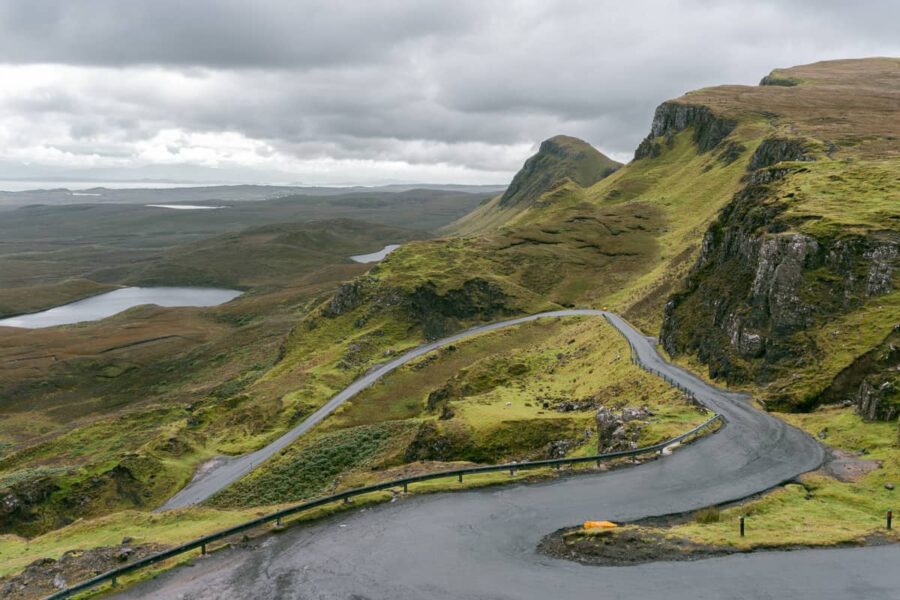
If you’re really pinching pennies—or just a bit adventurous—hitchhiking across Scotland still works, especially on popular routes from Glasgow and Inverness.
Stand at service stations or on main roads with a clear, friendly sign that says “SKYE.” Be patient, dress warmly, and always trust your gut when getting into a car; safety first.
Cycling gives you more freedom and is cheaper in the long run. From Fort William, follow quiet roads and dramatic landscapes to Mallaig, then cross to Skye (either via bridge or occasional summer ferries).
The main roads can get busy, but side routes like the Sleat Peninsula are breathtaking and not as hairy for bikes.
Pack waterproofs and spares, though—I’ve been caught in surprise rain more than once! And for the decent climbs ahead, a lightweight setup helps loads.
You’ll earn your island sunset with every pedal, promise.
Budget Accommodation on the Isle of Skye
Finding an affordable place to sleep on Skye isn’t always easy, especially in summer, but it’s far from impossible.
Whether you’re after a cozy bed indoors or want to pitch your tent under the Skye sky, you’ll find options that won’t wreck your wallet if you plan ahead.
Best Hostels and Guesthouses
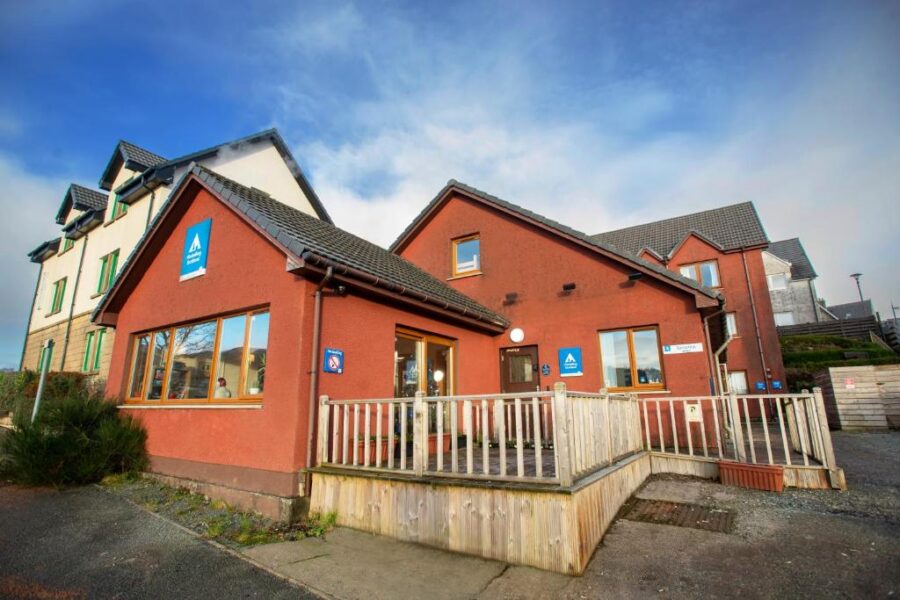
Hostels and guesthouses are your secret weapon for keeping costs down on Skye. If you’re in Portree, check out the Portree Youth Hostel and Skyewalker Hostel in Portnalong.
These spots offer clean dorms and private rooms for much less than hotels. What I love about Skye hostels is the social vibe. It’s not unusual to bond with hikers or share stories in the communal lounges.
Guesthouses can feel more peaceful but usually cost a bit more, though breakfast is often included—which, trust me, matters when your day starts at sunrise.
A lot of these places fill up fast between May and September, so book beds ahead. Use a site like Booking.com to browse and snag a spot if you spot a good deal.
Affordable Airbnb and Budget Hotels
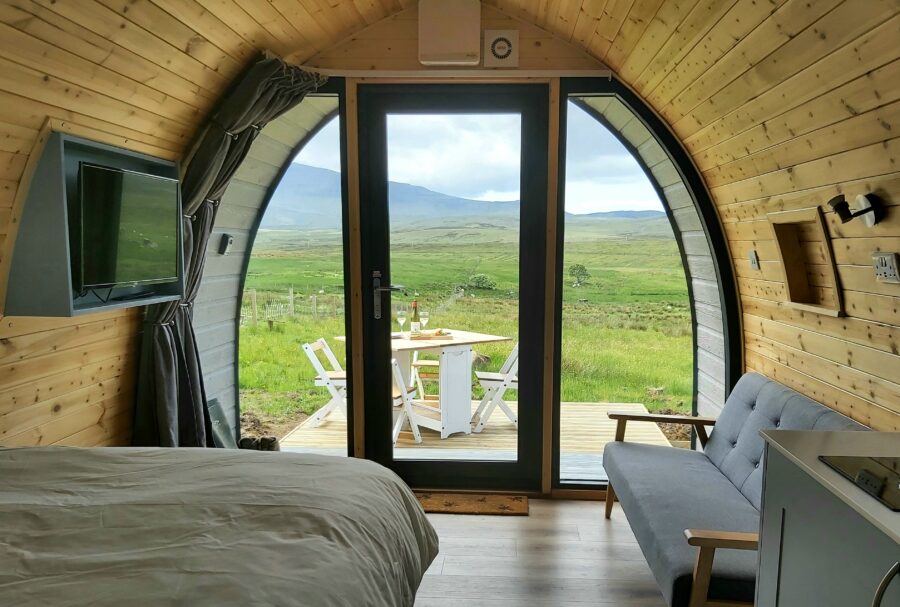
Airbnb on the Isle of Skye isn’t always budget-friendly these days, but sometimes you get lucky if you’re traveling outside the busiest months.
For couples or families, a small flat or granny annexe can feel more like “home” than a hostel, and sometimes you’ll get a kitchen to save on meals.
Budget hotels still exist, mostly around Portree and Broadford. They won’t be flashy, but you’ll get a private ensuite room for a decent rate, especially if you don’t mind being just outside the main villages.
It’s worth searching for deals well in advance, and sometimes a cancellation pops up at a bargain price. Consider properties with breakfast included to minimize daily costs.
Camping, Wild Camping, and Campsites
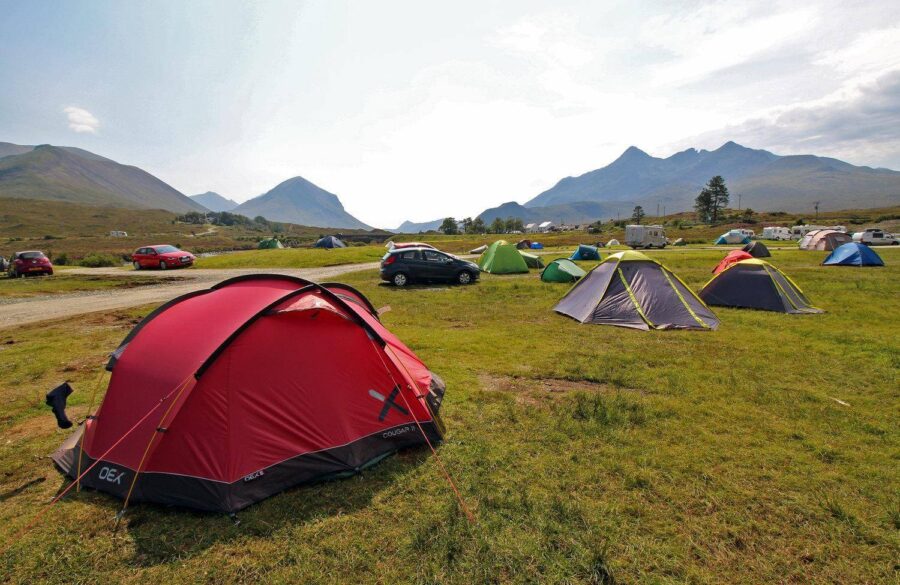
If you’re up for adventure—and don’t mind a little roughing it—camping on the Isle of Skye can be magical.
There are organized campsites like Sligachan or Glenbrittle, both set in jaw-dropping scenery, that offer showers and facilities for less than most other accommodation. Campsites typically let you pitch a tent for around £10-£20 per night.
Wild camping is allowed if you follow the Scottish Outdoor Access Code—tread lightly, camp only for a night or two, and leave no trace.
There’s nothing quite like waking up with the mountains or sea outside your tent. A word to the wise: the weather can change in five minutes flat, so come prepared for rain, midges, and chilly nights even in July.
When I travel solo or on the cheap, communal kitchens are a lifesaver. Most hostels, and even a fair few guesthouses, let you cook your own meals.
This isn’t just about budget—it also means you can eat earlier, later, or just lighter than what’s on offer in Skye’s cafes and pubs.
Shared fridges, stoves, and dining tables create a kind of temporary tribe of travelers; I’ve swapped recipes with Austrians and Argentinians while waiting for pasta water to boil.
And you don’t even need to love cooking, honestly. Sometimes it’s as simple as making sandwiches to take to the Old Man of Storr or packing up breakfast for a dawn hike.
If you’re hunting for accommodation, look out for “self-catering” or “communal kitchen” in the listing. It’s a real budget booster and a chance to meet people you’d otherwise never cross paths with.
Three-Day Budget-Friendly Isle of Skye Itinerary
This itinerary takes you through some of Skye’s most stunning views, hidden gems, and classic stops—without breaking the bank.
You’ll explore dramatic landscapes, castle ruins, charming villages, and those unforgettable wild Scottish coasts, all while sticking to a reasonable budget.
Day 1: Portree and the Trotternish Peninsula
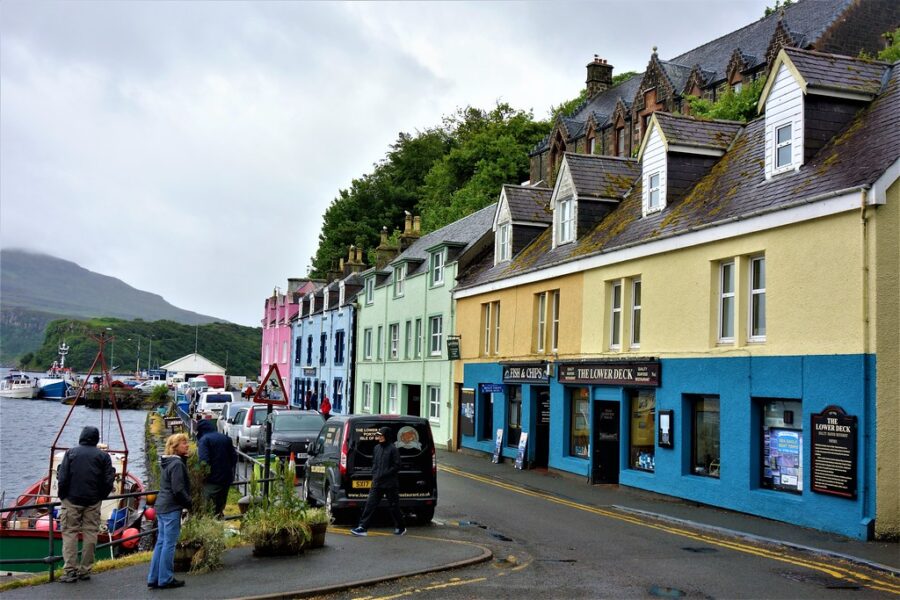
Start your journey in Portree, the colorful capital of Skye. It’s a friendly little town, and honestly, you get a nice vibe just strolling around the harbor.
There’s a Coop grocery here—grab picnic supplies; it’s way cheaper than eating out every meal.
After breakfast, drive north toward the Trotternish Peninsula. This area is packed with jaw-dropping scenery that barely costs a thing.
You’ll pass the famous Kilt Rock and Mealt Falls—a quick photo stop, don’t linger too long. If you’re like me and love dramatic landscapes, the cliffs here will not disappoint.
Continue up to the little village of Staffin. There’s a lovely little beach with dinosaur footprints if the tide’s out.
Most folks miss it, but you can walk there for free, and honestly, it’s pretty cool tracing ancient giants.
In summer, you can camp or stay in a local hostel nearby to save money. There are a couple of simple B&Bs too, just book ahead.
I’ve found the people up here unusually welcoming, always happy to give you directions or recommend a hidden hike.
Day 2: Quiraing, Fairy Glen, and Old Man of Storr
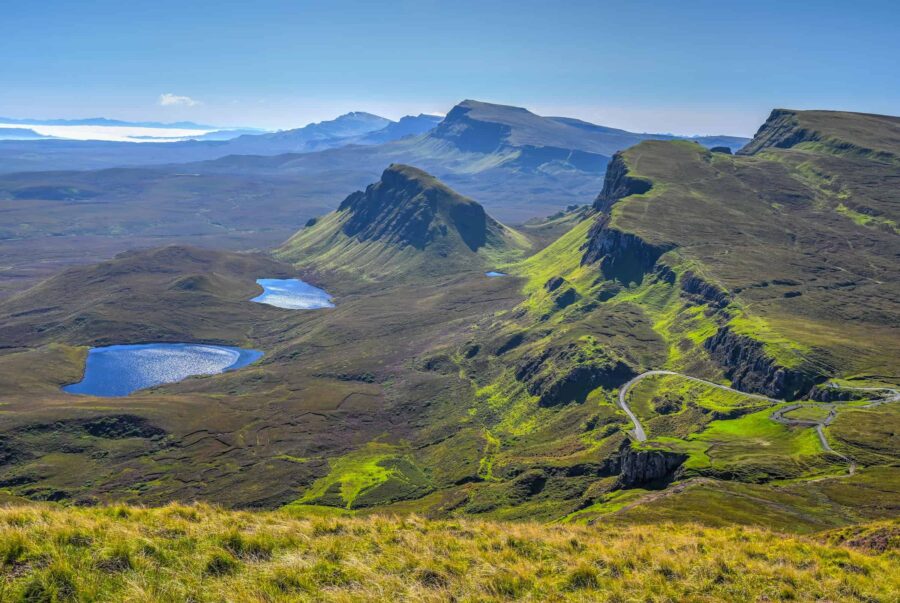
Set out early for the Quiraing. This strange, wild landscape is honestly one of my favorite walks in Scotland—sometimes I catch myself wondering if I’ve landed on another planet.
Parking fills up fast, so if you want to avoid the headache (and the fees), get there before the crowds. You don’t need to tackle the whole loop; even a short wander gives you those jaw-dropping views that make you stop and stare.
Next, swing by the Fairy Glen near Uig. This place looks almost unreal—tiny green hills, odd little formations, and a vibe that’s more storybook than real life.
Kids go wild here, but I’ve seen plenty of adults climbing around the “castles” and peering into ponds. It’s a quirky spot for a cheap adventure, and, to be honest, it tends to stay quieter than the headline hikes.
In the afternoon, aim for the Old Man of Storr. The climb’s steep, no denying it, but if the weather cooperates, you’ll snag iconic photos that’ll make your friends jealous.
Take your time—bring lunch, find a rock, and just soak in the view. Apart from parking, it’s totally free, and honestly, a trip to Skye feels incomplete without standing here.
Day 3: Neist Point, Dunvegan Castle, and Coral Beach
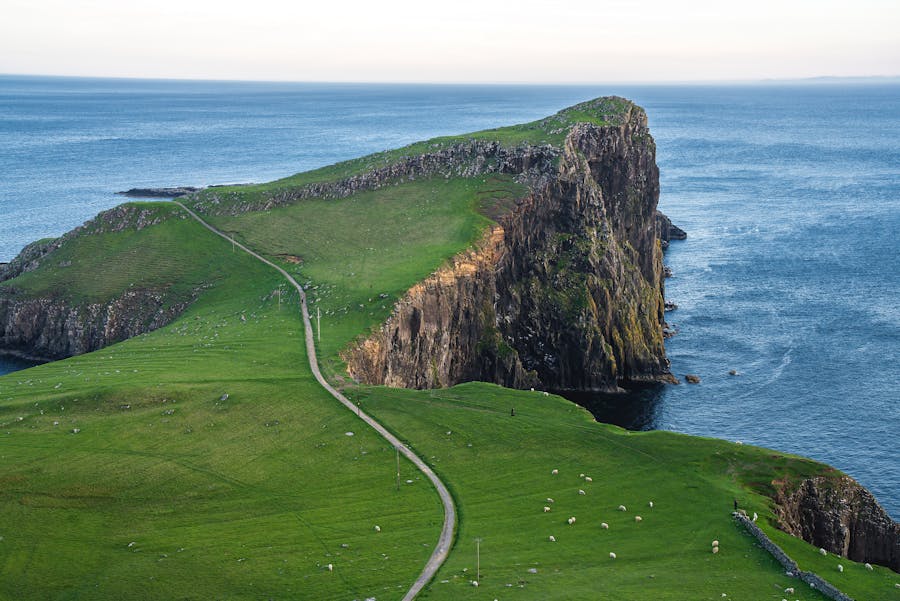
Head west to Neist Point first thing. The walk out to the lighthouse is straightforward, and I’d argue these are some of the best sea views on Skye.
Keep your eyes peeled for dolphins or whales—locals say mornings are best, but I’m still waiting for my lucky day.
Afterward, check out Dunvegan Castle. Entry isn’t free, but you can still wander the grounds or admire it from the gardens if you’re watching your budget.
Sometimes I skip the castle tour and just picnic on the lawn, picturing all the clan drama that must’ve unfolded here.
Finish up at Coral Beach, a true hidden gem just up the road. The water looks almost tropical (no kidding), and the “sand” is actually crushed white coral.
It’s a photographer’s dream, and if you’re feeling brave, go for a chilly dip. There’s no entry fee, just a bit of a walk from the car park, but every step is worth it.
Free and Low-Cost Things to Do
You can find plenty of wallet-friendly adventures on Skye—if you know where to look. From unforgettable hiking trails to local shindigs, there’s magic here that doesn’t cost a fortune.
Unmissable Hikes and Walking Paths
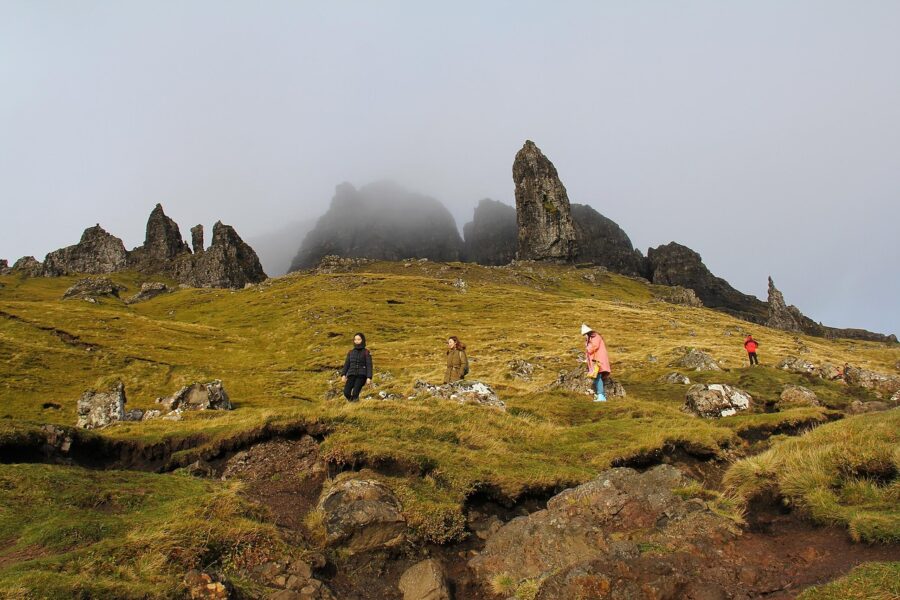
You really can’t visit Skye and skip the hikes. Even if you’re not a “hiker,” the island’s paths have a way of winning folks over.
The Old Man of Storr is a classic, but I’ve got a soft spot for the peaceful trails at Fairy Glen—winding, grassy, and usually blissfully quiet.
Quiraing is another wild favorite. The landscape looks almost fake, and the light changes faster than you’d think.
If you want something easier, try Spar Cave near Elgol, but check the tides or you’ll end up with soggy boots (been there, done that).
Most of the main trails are free and well-marked. Bring sturdy shoes and don’t forget a rain jacket—Skye weather loves surprises.
Pack a picnic, slow down, and take in the views—sometimes the best moments happen just off the main track.
If you’re curious about guided options or want to see if you missed a gem, have a look at day hikes. But honestly, most of the island’s best walks are free and easy to do solo.
Discovering Local Community Events
If you want a taste of real Skye, local events are where it’s at. Village halls always have notice boards packed with ceilidhs (those wild Scottish dances), craft fairs, or even produce days.
You might stumble into a livestock show or a music night for just a few pounds. My first ceilidh was pure chaos and joy—still one of my favorite memories.
Ask shopkeepers or your B&B host what’s happening. Sometimes you’ll find food trucks in Portree’s square or impromptu music in the pub.
Most of these cost next to nothing, but you’ll walk away with stories you won’t find in any guidebook.
Don’t worry if you don’t know the dance steps—locals love it when you just jump in and give it a go.
Authentic Experiences Without the Price Tag
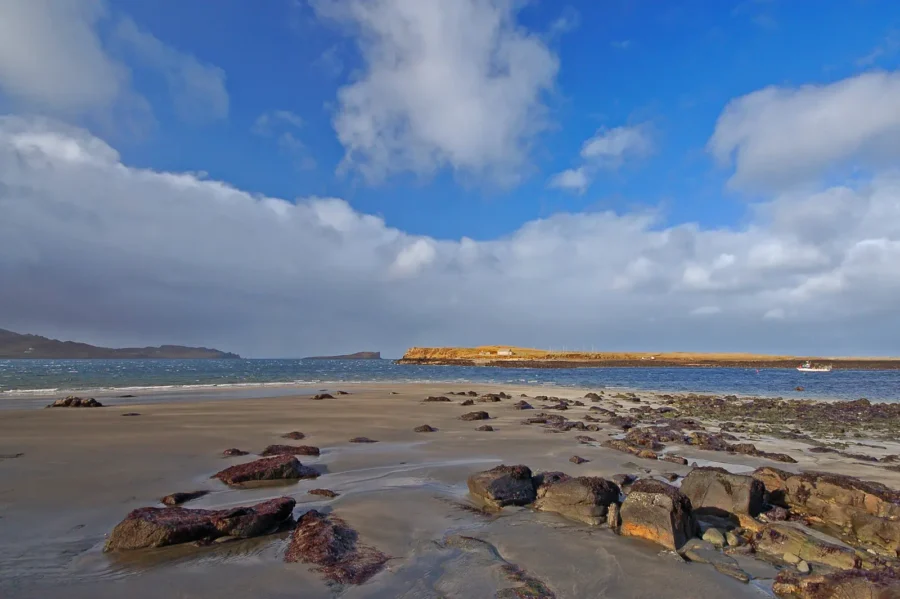
Not every authentic Skye adventure needs to cost a thing. Catch low tide at An Corran Beach and you can spot dinosaur footprints that have been there for millions of years. It’s totally free and, honestly, makes for a better story than most souvenirs.
Pop into the tiny galleries or weaving workshops scattered around the island. Even if you don’t buy, chatting with artists often leads to other local tips.
Don’t miss Staffin’s weekly market or slip into a rural church on a Sunday—these moments show you the real island life.
Some of my best Skye days have started with wandering, a bit of curiosity, and a willingness to chat. Save your cash for a fresh seafood snack at a food truck or a cuppa in a cozy café, and just let the island’s personality find you.
Exploring Isle of Skye’s Natural Wonders on a Budget
You don’t need a big budget to see Skye’s best bits. A little planning and solid shoes will take you to wild rivers, jagged cliffs, and secret coves most tourists never even notice.
Fairy Pools and Loch Coruisk
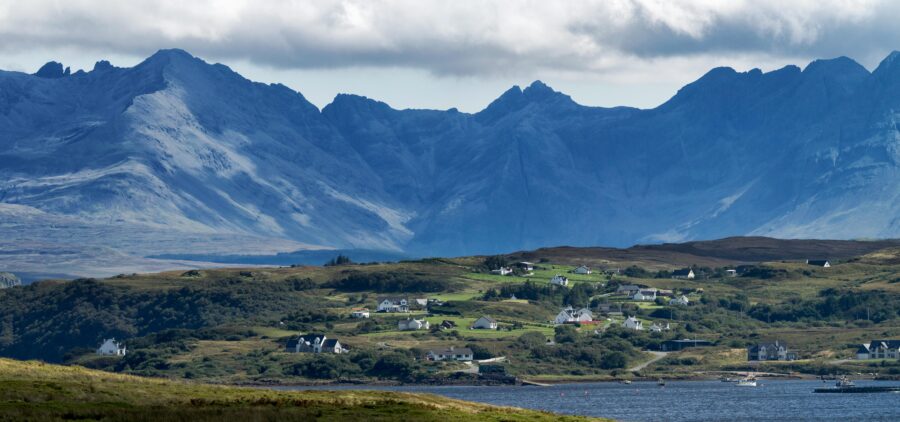
If you’re after clear, blue water in Scotland (yes, it exists), the Fairy Pools are the spot. They sit at the foot of the Black Cuillin, and even the parking lot views are worth a pause.
Parking costs a few pounds, so try to arrive early or carpool if you can. The walk is rocky but not tough, and the pools are icy cold—if you’re brave, take a dip.
I only managed a toe-dip in June, and that was enough! Bring a picnic and waterproof shoes, and just spend some time hopping from rock to rock.
Loch Coruisk is wilder and usually much quieter. You can take a boat from Elgol, or trek in on a rough path if you’re feeling adventurous.
The trail is free and unforgettable—towering mountains, no shops, no roads, just you and the wild.
Budget tips:
- Pack your own snacks—there’s nothing for sale nearby
- Go early for fewer crowds and magical light for photos
Dramatic Cliffs at Kilt Rock and Brother’s Point
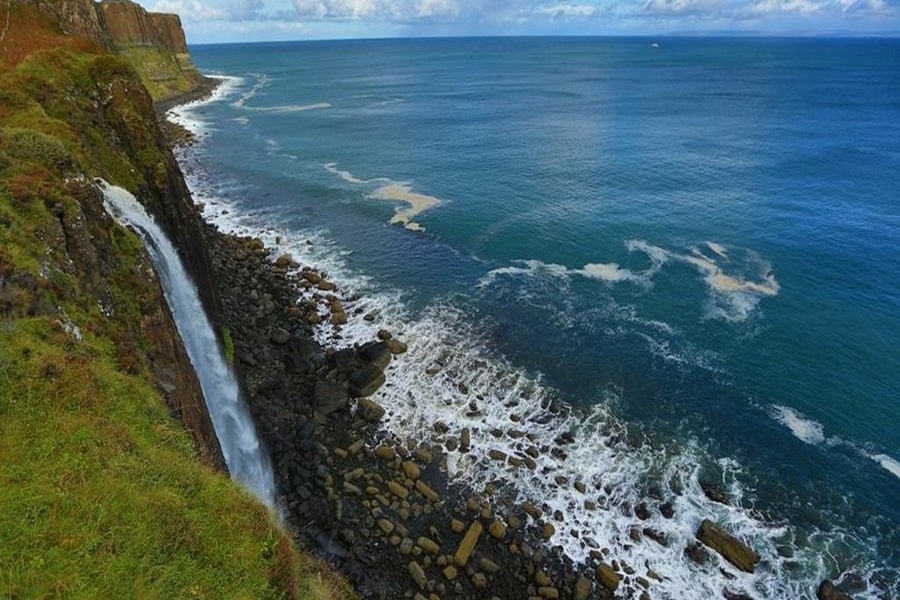
Kilt Rock really does look like a giant tartan—bands of basalt columns running down to the sea. The lookout is free, and you’ll hear Mealt Falls crashing into the ocean below.
Geology nerds and photographers will love it here. Brother’s Point, though, is my pick for a quieter vibe.
There’s a tiny, unsigned path at a roadside lay-by. A short walk gets you to a headland with wild rock formations and pounding surf.
It’s dramatic, windy, and you’ll probably have it to yourself. After rain, the path gets muddy and slippery, so boots you don’t mind getting dirty are a must.
While everyone crowds Kilt Rock’s platform, Brother’s Point feels like your own secret.
Quick tips:
- Both are totally free
- Weather changes the mood—misty days are extra atmospheric
- Bring a windbreaker, trust me
Secret Spots: Elgol and Sleat Peninsula
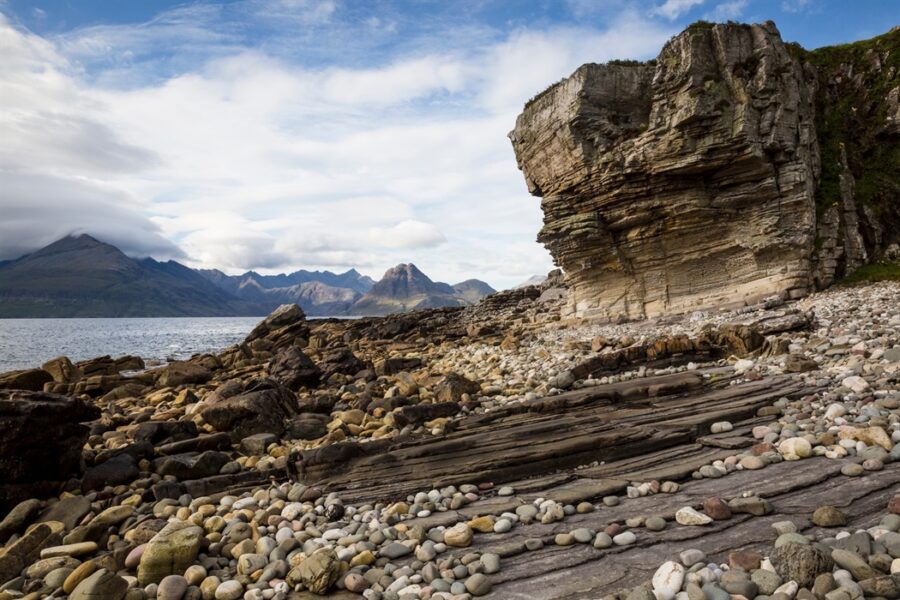
Most visitors skip Elgol, tucked away on Skye’s southwest coast. If you’ve got wheels (and patience for single-lane roads), you’ll wind past sheep fields and sudden sea views that just stop you in your tracks.
Elgol’s pebble beach is perfect for a lazy afternoon watching boats—and sometimes seals.
You can splurge on a boat trip to Loch Coruisk, or just wander the shoreline for free. Sunsets here are unreal, especially with the Cuillin peaks glowing orange.
The Sleat Peninsula, often called “the garden of Skye,” feels softer and greener than the north. There are small villages, almost no tour buses, and peaceful walks through woods and along the coast.
Knock Bay and Armadale Castle’s gardens are free to explore if you skip the museum.
Handy info:
- Parking at Elgol beach is free, but there aren’t many spots
- Bring snacks and a jacket—shops are rare and the weather’s fickle
- Watch for sheep on the road—they don’t care about your schedule
These corners of Skye feel raw and real. If you’ve got a day or two to spare, don’t miss them.
Cultural and Historic Budget Attractions
Skye’s packed with stories, ruins, and traditions. Some of the best spots let you get close to history without spending much at all.
Dunvegan Castle, Duntulm Castle, and Dunscaith Castle
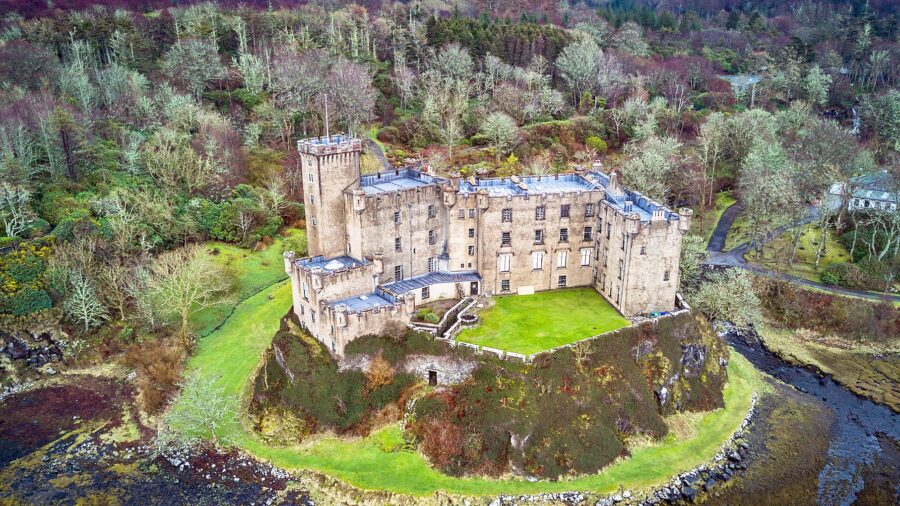
Dunvegan Castle is the most polished of the bunch. Clan MacLeod still calls it home, and you can wander the gardens for a smaller fee if you skip the castle itself.
Honestly, the gardens and loch views are my favorite part, especially with a breeze rolling in. If you’re saving cash, admire the castle from outside or stroll along the public paths nearby.
Duntulm and Dunscaith Castles are roofless ruins perched on dramatic cliffs, with wild sea views and no entry fee.
I’ve parked up near Duntulm and just listened to the wind and waves, sheep wandering around. You’ll want good shoes—the ground gets muddy and rocky.
Both ruins are fantastic for photos and feel like true hidden gems. If you come early or late, you might have the place to yourself.
Quick tips:
- Pack a picnic and eat by the ruins—it’s magic
- Bring a rain jacket, Skye weather can turn on a dime
Talisker Distillery on a Shoestring
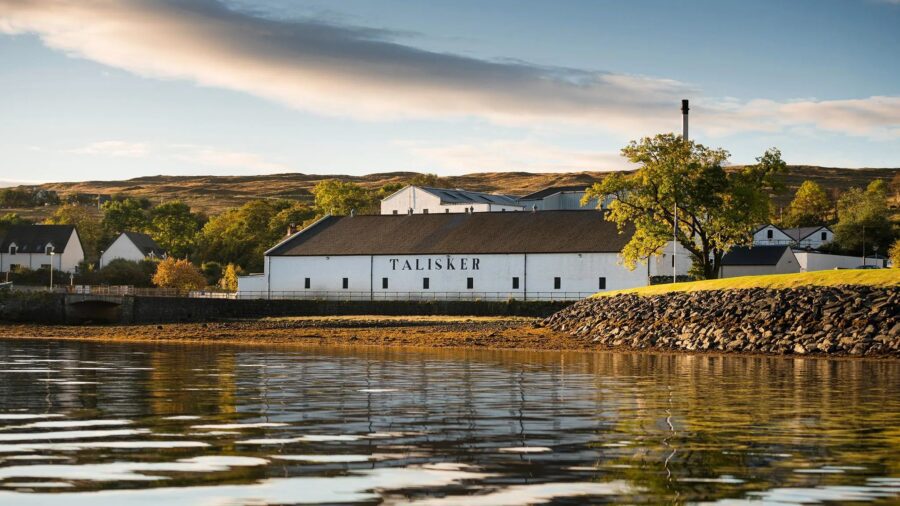
A full Talisker tour isn’t cheap, but you can still get your whisky fix without breaking the bank. The visitor center is free, and sometimes you can sample a dram at the tasting counter for just a couple of pounds.
If you’re short on time or cash, just browse the shop. Staff love to chat about Skye’s only whisky and share stories about the smoky flavor.
Take a walk along the river path out back—my favorite view is looking back at the white-washed buildings with the Cuillin mountains behind.
If you’re friendly, you might even get offered a sniff from a bottle—hey, it’s happened to me.
Insider tip:
Check for last-minute tour cancellations early or late in the season for a cheaper spot.
Plockton and Eilean Donan Castle Side Trips
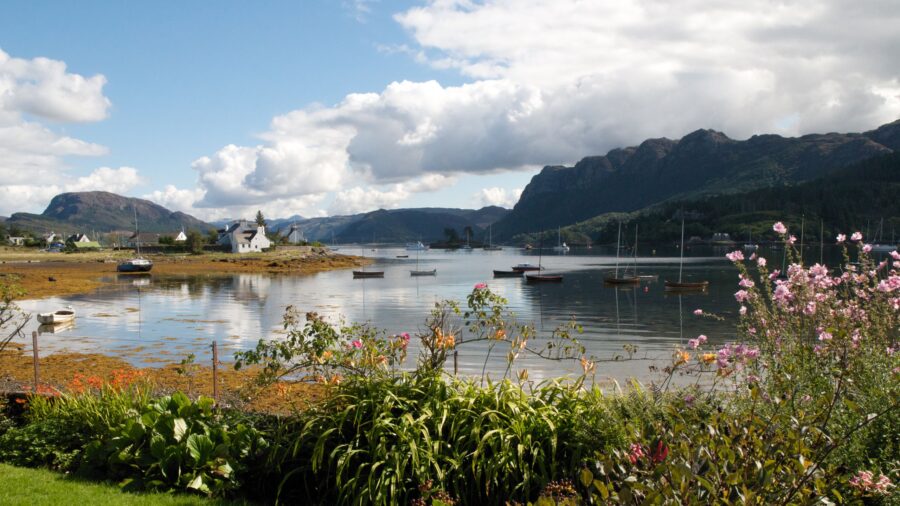
A bit outside Skye, but Plockton and Eilean Donan Castle make great, affordable side trips if you’ve got a car.
Plockton is a charming village with palm trees (seriously) and a calm bay dotted with colorful boats. I once wandered into a free folk music session in the Plockton Inn—one for the memory bank.
Eilean Donan Castle charges for entry, but honestly, the best views are from the outside anyway. There’s a public car park and you can walk all around for epic photos.
At low tide, you can wander down to the water’s edge for a closer look.
What to do for free:
- Stroll Plockton’s waterfront
- Snap photos at Eilean Donan from the car park or old bridge
- Watch for seals and otters if it’s quiet—always a thrill
Eating Well on a Budget
Skye’s food scene is all about simple pleasures. With fresh seafood at every turn, lively food trucks, and plenty of ways to DIY your meals, you really don’t need to spend a fortune to eat well here.
Where to Find the Best Budget-Friendly Seafood
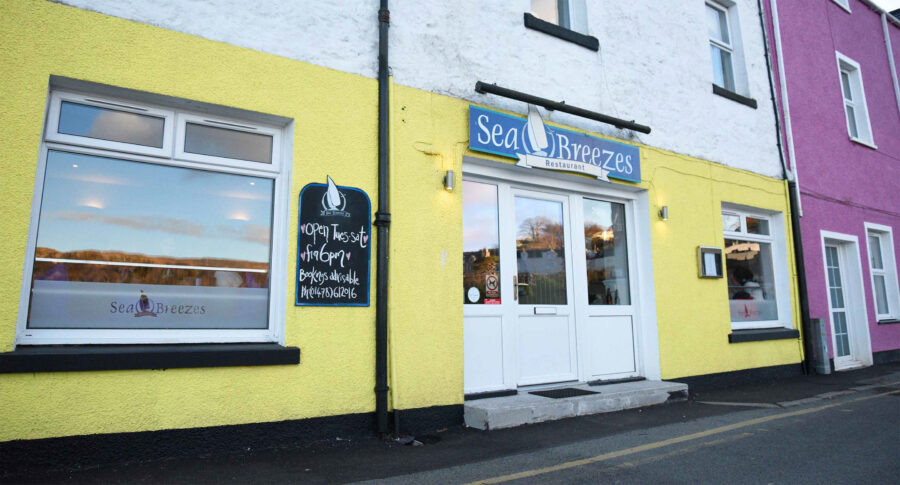
Let’s be real—Skye’s an absolute paradise if you’re into seafood. Some of my most memorable meals came from tiny, family-run joints you’d probably drive right past if you didn’t know better.
Sea Breezes in Portree stands out for fresh catches at prices that won’t make you wince, but it fills up quick, so I’d book ahead if you can.
Keep your eyes peeled for handwritten chalkboard menus outside little harbor shacks or cafés. I always look for local langoustines, mussels, or haddock, and honestly, the prices usually beat what you’ll find in fancier spots.
I’ve chatted with fishermen as they haul in the day’s catch—sometimes they’ll tip you off to a takeaway that’s cooking up whatever just landed.
One trick I swear by: grab a seafood platter meant for two. They’re usually piled high and perfect to split for a hearty lunch or a light dinner.
| Recommended Spot | Specialty | Approx. Price (per person) |
|---|---|---|
| Sea Breezes | Fresh seafood | £12 – £18 |
| The Oyster Shed | Hot/cold seafood | £8 – £16 |
| Local Chippies | Fish & chips | £7 – £10 |
Local Delicacies at Food Trucks and Markets
I’ve always had a thing for Scottish food trucks, and Skye’s scene is surprisingly good. Whether you spot one parked in a layby or down by a busy pier, these trucks serve up hot food with local flair—venison burgers, cullen skink (smoked haddock soup, if you’re not familiar), or wild game pies that actually fill you up.
If you’re in Portree on market day, swing by. You’ll find farmers and bakers selling oatcakes, cheeses, or smoked salmon you can munch on right there.
My personal weakness? The Hebridean Baker’s truck—if you spot it, grab the shortbread. Cheap, buttery, and honestly, it just tastes like Scotland.
Don’t overlook the coffee trucks. Sometimes it’s the only way to get a real, strong coffee before hitting the road again. If you see anything labeled “homemade,” I say go for it—it’s usually worth the gamble.
Tips for Self-Catering and Affordable Meals
I’ll be upfront—dining out for every meal on Skye will drain your wallet fast. Most B&Bs and holiday lets come with a basic kitchen, so picking up supplies at the Co-op or a local shop can save you a ton.
Bread, cheese, local eggs, and smoked fish make for quick, tasty breakfasts that don’t require much fuss.
Pack a picnic and eat it by a loch or while puffin-spotting (if you’re lucky). I always stash a couple Scotch pies from the bakery—they keep well and are lifesavers if your plans shift or the weather acts up.
Here’s a quick list to keep your budget intact:
- Shop at small village stores for basics
- Grab pre-made sandwiches, fruit, and crisps for lunch
- Carry a refillable water bottle instead of buying drinks everywhere
- Reheat leftovers from dinner—most places have a microwave and don’t mind
You’ll thank yourself later when you’ve got extra cash for a ferry ride or a proper whisky tasting.
Money-Saving Travel Tips for Skye
You can soak up Skye’s wild scenery, ancient castles, and lively culture without blowing your budget. Flexibility, a few local tricks, and some advance planning really stretch your money further than you’d expect.

Public transport on Skye isn’t exactly convenient, so I usually tell folks to rent a car—especially if you’re traveling with friends or family. You’ll split costs and reach those out-of-the-way waterfalls and hidden beaches.
If you book early, you can snag decent deals on car rentals and flights through sites offering cheap flights and car rentals.
Hostels, B&Bs, and even camping keep costs down. Many guesthouses serve up a hearty Scottish breakfast, which fills you up and saves money. For dinner, I usually hit the local grocery or cook something simple if my place has a kitchen.
Eating out gets pricey, so I grab ingredients for sandwiches or pasta whenever I can.
A few must-pack items for Skye on a budget:
- Reusable water bottle (tap water is good and free)
- Rain jacket (it’s Skye—weather changes in a blink)
- Hiking boots
Insider Advice for Affordable Sightseeing
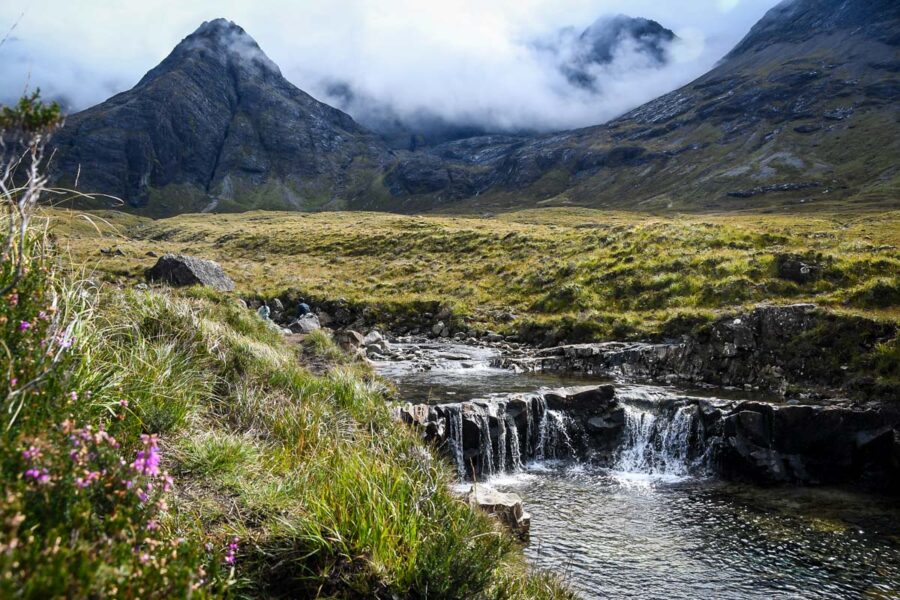
Most of Skye’s headline attractions won’t cost you a penny. The Old Man of Storr, Fairy Pools, and Neist Point are all free and jaw-dropping.
Just pay for parking (usually just a few pounds), and you’re good to go.
I like to hit the popular spots early to dodge crowds and snag a decent parking spot.
Traveling with friends or a small group helps—you’ll split the car, accommodation, and even snacks and petrol.
If you need to book attractions, look for bundled passes or ask at the local tourism office about free walking tours.
I always chat with café owners about the best spots that aren’t on most tourist maps. Locals love sharing their secret places, and you’ll find quiet lochs, abandoned castles, or cliff walks that cost nothing but a bit of effort.
For bigger trips, keep an eye out for unbeatable flight deals and set price alerts before you book anything.
Driving on the Left Side and Getting Around
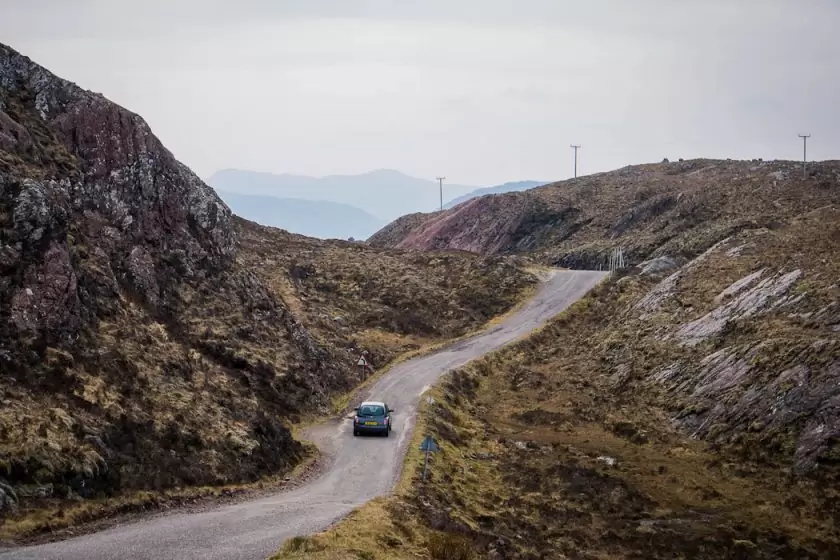
Driving in Scotland means sticking to the left. At first, it feels weird—think roundabouts and manual gear shifts—but you’ll get used to it with a little patience.
Most of Skye’s roads are one lane each way, sometimes even narrower with passing places.
Sheep love to wander onto the roads, and you’ll often find yourself crawling behind a tractor. Honestly, the main traffic jam here is sheep, not cars.
Stick to 40 mph or less on backroads and keep an eye on the weather—rain hits fast and can make roads slick.
Petrol is expensive out here, so plan your route and fill up early. Skye is best by car, but if you’re up for a challenge, try cycling—just be ready for hills and unpredictable weather.
If you’re feeling extra thrifty, mix walking with bus routes, but double-check timetables—they’re not as frequent as you might hope.
Packing light makes driving and hopping on buses easier, and you’ll appreciate it when squeezing into a tiny car or catching a narrow ferry.
Frequently Asked Questions
Finding the best of the Isle of Skye on a budget takes a bit of planning, but you’ll get more value if you know where to stay, what to see, and how to make your trip stretch. From jaw-dropping nature walks to cozy hostel nights, there’s a ton you can squeeze in without spending a fortune.
What are the top must-see attractions on the Isle of Skye for a short 2-day trip?
If you’re in a rush, stick to the essentials. The Trotternish Loop is packed with wild rock formations and that iconic Quiraing ridge walk.
The Old Man of Storr is a classic—steep, yes, but totally worth it.
Portree makes a handy base, plus its colorful harbor is worth a stroll. If you have time, swing by the Fairy Pools for a splash and some waterfalls.
I always suggest a quick stop at Kilt Rock and Mealt Falls—they’re easy to reach and the views are huge.
How can you maximize your visit with a 3-day budget-friendly itinerary on the Isle of Skye?
Cluster your sightseeing so you’re not zigzagging across the island and burning fuel. Day one, tackle Trotternish Peninsula hikes and Portree.
Day two, check out the Fairy Pools and make your way to Neist Point Lighthouse.
If the weather’s on your side, go for a basic campground—they’re much cheaper than anything else on Skye, and camping under the stars is an experience in itself.
And seriously, pack snacks. Eating out every meal adds up way faster than you’d think.
Can you suggest an affordable 4-day itinerary that covers the Isle of Skye’s highlights?
With four days, you can actually slow down. Split your time between the big sights (Storr, Quiraing, Fairy Pools) and a few lesser-known gems.
Last time I visited, I spent half a day in Elgol—a tiny fishing town, honestly lovely and way less crowded.
You could try:
Day 1: Trotternish and Portree.
Day 2: Fairy Pools and Talisker Bay—if the weather’s decent.
Day 3: Neist Point and Dunvegan Castle’s gardens.
Day 4: South Skye—Elgol and maybe a boat trip if your budget stretches.
What tips do you have for budget accommodation while exploring the Isle of Skye?
Skye’s popularity means budget rooms disappear fast, especially in summer. Hostels are your safest bet for something cheap and a bit social.
There are a few bothies (super-basic huts), but they fill up quickly.
I’ve managed to snag last-minute campground spots—some even have pods if you want something between a tent and a hotel.
If you don’t mind roughing it, Skye allows wild camping in places—just be respectful, leave no trace, and don’t pitch up in someone’s front yard.
How to plan a cost-effective 7-day journey through the Isle of Skye’s landscapes?
A week is perfect for slowing down. Settle into a cheap guesthouse or hostel and explore on foot or by local bus when you can.
Dedicate each day to a different area—Trotternish, Sleat, Waternish, and the Cuillin mountains if hiking’s your thing.
Sometimes I just take a lazy day with a long picnic by the shore.
Food trucks and tiny roadside cafés have saved my wallet more than once. Plus, you’ll meet some real characters running those places.
Check if local museums have donation boxes instead of steep entry fees—you’d be surprised.
What are the best ways to experience the Isle of Skye’s natural beauty on a limited budget?
Honestly, the most jaw-dropping parts of Skye won’t cost you a thing. If you ask me, walking is hands-down the best way to get close to the island’s magic.
Try hiking up to the Old Man of Storr or wandering through the Quiraing—both are free and, frankly, unforgettable. Coral Beach? It’s open to everyone, and you’ll probably wonder why you ever considered paying for a tour.
Don’t rush from one hotspot to the next. Sometimes, just sitting quietly by a loch or meandering along the shoreline reveals the real Skye.
I remember one chilly afternoon, I watched seals near Dunvegan for an hour—didn’t pay a penny, and honestly, it’s still one of my favorite travel moments. Pack a thermos, stash a couple of sandwiches, and let yourself slow down.
Soak up the wild, unpredictable weather and let the landscape surprise you. That’s Skye at its best, and it won’t break the bank.



